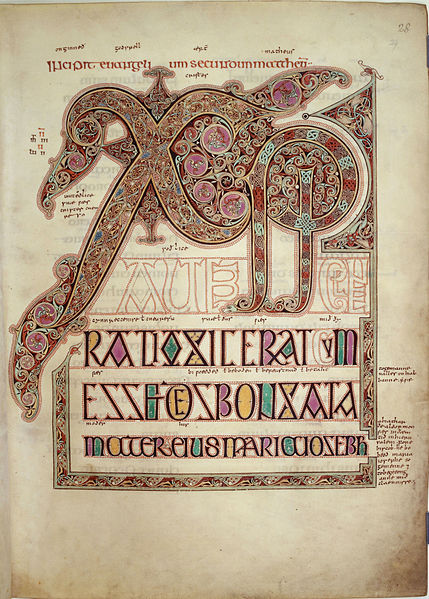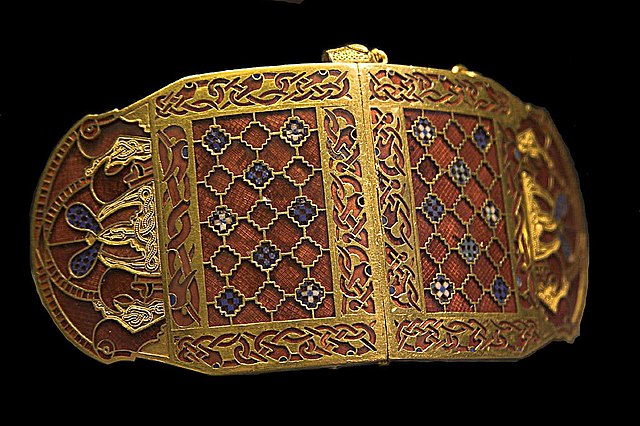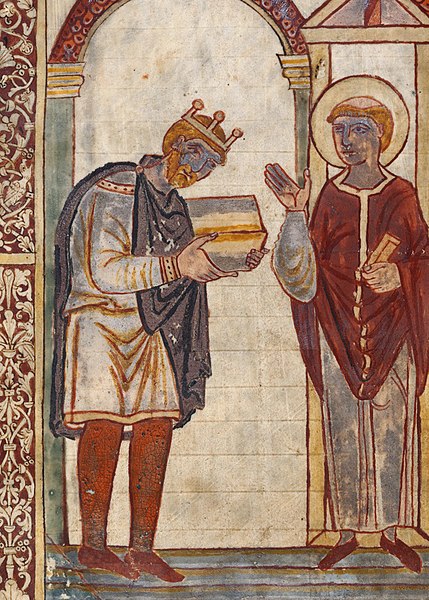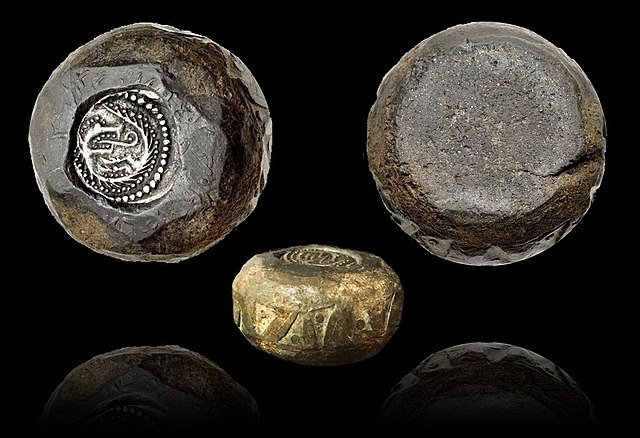Anglo-Saxon art covers art produced within the Anglo-Saxon period of English history, beginning with the Migration period style that the Anglo-Saxons brought with them from the continent in the 5th century, and ending in 1066 with the Norman Conquest of England, whose sophisticated art was influential in much of northern Europe. The two periods of outstanding achievement were the 7th and 8th centuries, with the metalwork and jewellery from Sutton Hoo and a series of magnificent illuminated manuscripts, and the final period after about 950, when there was a revival of English culture after the end of the Viking invasions. By the time of the Conquest the move to the Romanesque style is nearly complete. The important artistic centres, in so far as these can be established, were concentrated in the extremities of England, in Northumbria, especially in the early period, and Wessex and Kent near the south coast.
Shoulder-clasps from Sutton Hoo, early 7th century
11th century walrus ivory cross reliquary (Victoria & Albert Museum)
Bird from the Sutton Hoo shield (part replica)
The evangelist portrait and Incipit to Matthew from the Stockholm Codex Aureus, one of the "Tiberius group", show the Northumbrian Insular and classicising continental styles that combined and competed in early Anglo-Saxon manuscripts. It was probably made in Canterbury.
The Anglo-Saxons were a cultural group that inhabited much of what is now England in the Early Middle Ages, and spoke Old English. They traced their origins to Germanic settlers who came to Britain from mainland Europe in the 5th century. Although the details are not clear, their cultural identity developed out of the interaction of these settlers with the pre-existing Romano-British culture. Over time, most of the people of what is now southern, central, northern and eastern England came to identify as Anglo-Saxon and speak Old English. Danish and Norman invasions later changed the situation significantly, but their language and political structures are the direct predecessors of the medieval Kingdom of England, and the Middle English language. Although the modern English language owes somewhat less than 26% of its words to Old English, this includes the vast majority of words used in everyday speech.

Page with Chi Rho monogram from the Gospel of Matthew in the Lindisfarne Gospels c. 700, possibly created by Eadfrith of Lindisfarne in memory of Cuthbert
King Æthelstan presenting a gospel book to (the long-dead) St Cuthbert (934); Corpus Christi College, Cambridge MS 183, fol. 1v
The Oseberg ship prow, Viking Ship Museum, Oslo, Norway.
Anglo-Saxon-Viking coin weight. Material is lead and weighs approx 36 g. Embedded with a sceat dating to 720–750 AD and minted in Kent. It is edged with a dotted triangle pattern. Origin is the northern Danelaw region, and it dates from the late 8th to 9th century.








